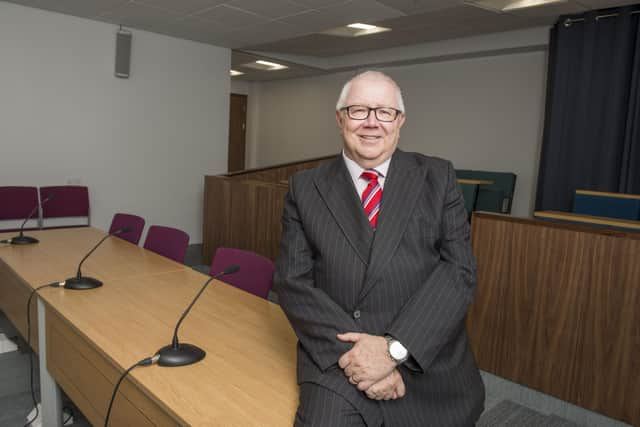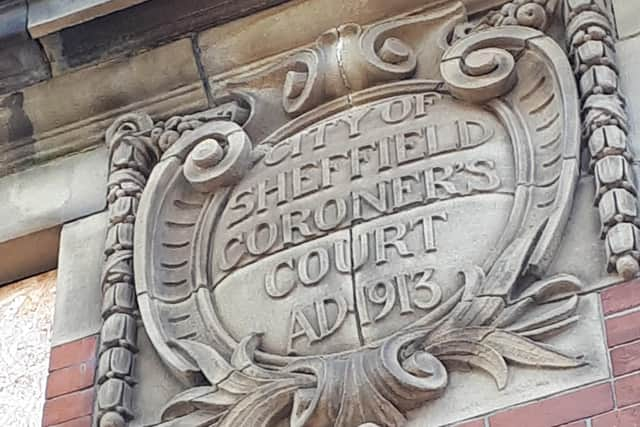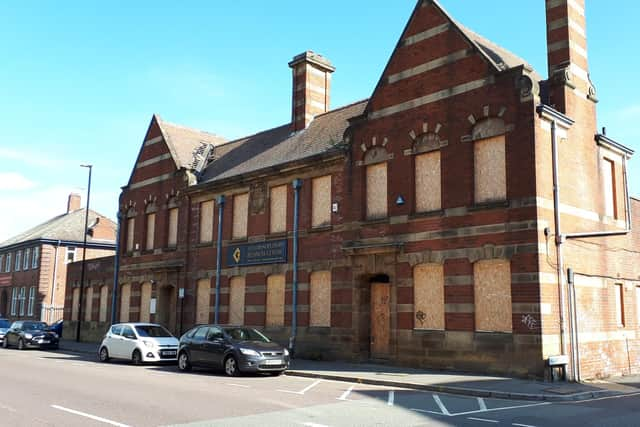Long history of Sheffield courts that give a very final verdict - on our deaths
and live on Freeview channel 276
These days, the coroner’s court in Sheffield has a different name – the Medico-Legal Centre. It’s a modern building, in Watery Lane in Netherthorpe.
But it’s by no means the first coroner’s court in the city, as we shall see.
Advertisement
Hide AdAdvertisement
Hide AdWhat are coroners’ courts all about? Coroners investigate the causes and circumstances of deaths, where these are not clear. This is something that’s been done for centuries.


The job of coroner is one of the oldest official posts, having been formally established as long ago as 1194. But there were coroners much earlier, by Anglo-Saxon times, though their job was a bit different.
The ‘crowner’ was there to look after the King’s financial interests in any criminal cases in the courts.
Even now, special coroners investigate treasure trove cases, a direct legacy of that task of looking after the king’s interests.
Advertisement
Hide AdAdvertisement
Hide AdBut one of the coroner’s main jobs was to investigate whenever a dead body was found and death was sudden or violent or otherwise suspicious. Over the centuries it’s come to be the main task.


When Sheffield got its first coroner, who knows?
But we can be sure that even in medieval times someone had the job, even when Sheffield was very small, and the coroner would have covered a wide area – probably Hallamshire, possibly more.
Coroners are judges, and that’s why they work from courts. They have to be qualified and experienced lawyers; until recently doctors could also be appointed, but that is no longer done.
They’re appointed by the Crown and their only responsibility is to the Crown.


Advertisement
Hide AdAdvertisement
Hide AdThese days they have sophisticated equipment to help them determine the medical cause of a death.
How different from the old days!
We’re not absolutely sure when Sheffield got its first coroner’s court.
At one time it was common for inquests to be held in private houses or inns and pubs, where a hastily-assembled jury of 12 good men and true were obliged to view the body, hear evidence on the cause of death, including from a doctor, and reach a verdict on the cause.
The coroner would be a local magistrate, who might well be a doctor too.
Advertisement
Hide AdAdvertisement
Hide AdYou may well have come across accounts of this in Victorian novels!
It has been suggested that in the 18th century there was a coroner’s court in Norfolk Street, possibly in the building, originally a house, on the corner with Surrey Street (now a travel agent’s, once Hibberts’ art shop).
We haven’t been able to evidence this but it’s interesting that in the 1850s a surgeon lived in the house next to the Brown Bear; we might perhaps imagine that inquests were held in his house.
If anyone knows more about this we’d be pleased to hear.
What is certain is that a new public mortuary was opened in Plum Lane (later Dunn Lane), off Corporation Street, in 1884. There had been public pressure for this.
Advertisement
Hide AdAdvertisement
Hide AdIn 1880 a press report on an inquest at the Talbot Inn, Blast Lane noted that the body had been left in the inn’s stables for days, so the landlord had been forced to move his horses.
It was common for the families of innkeepers to have to move out while there was a body in their house, often for two weeks before an inquest.
The jury in this inquest passed a motion demanding the town council provide a mortuary, and Dunn Lane was perhaps the result.
What’s certain is that Sheffield, having had appalling facilities for inquests, moved ahead of the curve in 1884. It wasn’t until 1887 that a new law was passed to standardise coroners’ work and proper coroner’s courts began to be set up more widely.
Advertisement
Hide AdAdvertisement
Hide AdDunn Lane provided a ‘dead house’, with glazed tile walls, patent ventilation and post-mortem facilities, along with a hearse house and jury, waiting and witnesses’ rooms. So it was a coroner’s court in all but name.
Sadly the building has long since disappeared and we can’t find any images of it. It was in a relatively out-of-the-way part of town even then, doubtless because landowners were wary of such facilities which they reckoned would reduce the value of neighbouring property.
By 1912 Dunn Lane mortuary had come to be seen as a disgrace and there was pressure to replace it. The result was the coroner’s court in Nursery Street, where the council had some spare land left over from street widening.
The new building – which we now know as the Old Coroners’ Court - cost £5,000, was designed by Sheffield’s first city architect F E P Edwards, and built by George Longden & Sons.
Advertisement
Hide AdAdvertisement
Hide AdIt had all the necessary facilities to a high standard, including an oak-clad courtroom and, interestingly for this date, stables and a coach house; it wouldn’t be long before motor vehicles took over.
It’s a dignified building, as was proper, and advertised its municipal links in the elegant cartouche high above the main door.
The court had to be extended in the 1920s and again in the 1950s, when bomb damage was finally repaired.
By this time its spaces were being used more widely; the youth court sat there for a while!
Advertisement
Hide AdAdvertisement
Hide AdThe 1913 court lasted longer than Dunn Lane, and by the time it closed in the 1970s much of the original interior had been altered.
Its replacement was the Medico-Legal Centre, again purpose built, in Watery Lane in Netherthorpe.
It houses the coroner’s offices, public mortuary, and all the facilities that go with the investigation of deaths; these days it’s frequently a pioneer in new techniques.
All a long way from Plum Lane in 1884, let alone the primitive facilities in use before then, but still providing an essential function, albeit one we all hope we won’t ourselves ever need.
Advertisement
Hide AdAdvertisement
Hide AdThank you to all who support local journalism with a digital or print subscription to The Star. The events of 2020 mean trusted, local journalism is more reliant than ever on your support. We couldn't do it without you. Subscribe here www.thestar.co.uk/subscriptions so we can keep campaigning on your behalf. Stay safe.